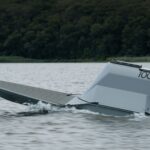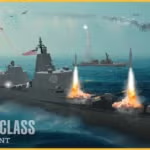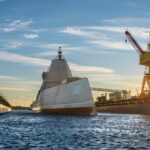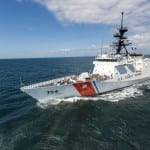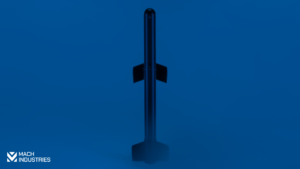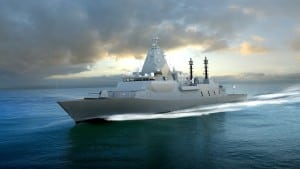
Naval Sea Systems Command confirmed today that each new Guided-Missile Frigate, beyond the first unit, has an expected end cost of $950 million each.This cost, in constant 2018 dollars, is the expected average threshold cost of each ship after the initial hull, Regan Campbell, program manager of the frigate program office (PMS 515) in PEO LCS, said in a media availability on Tuesday at the Surface Navy Association’s 2018 annual symposium.This cost does not cover the initial, first of class…

 By
By 